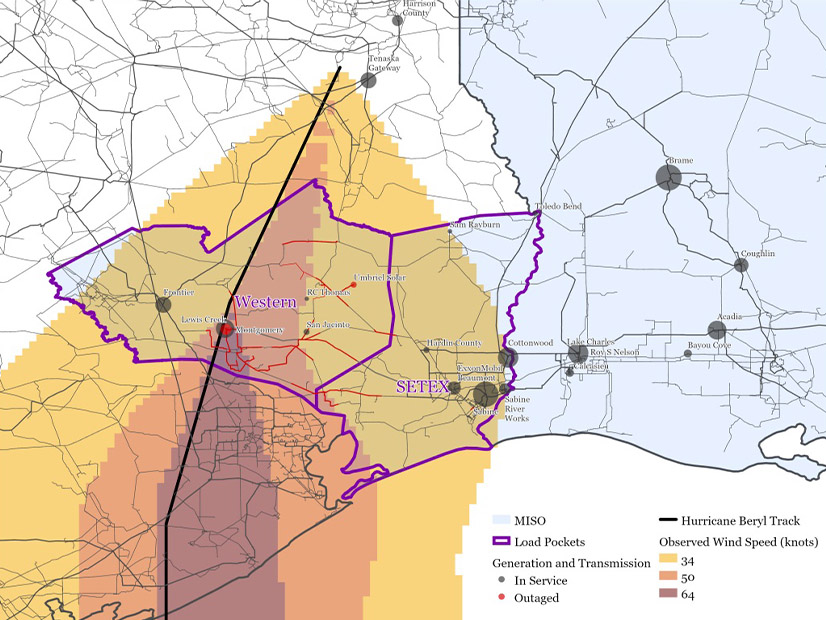CARMEL, Ind. — MISO said damage wrought by Hurricane Beryl triggered an overnight electrical island in a Southeastern Texas load pocket.
MISO reported an approximately 400-MW energized island existed in the Southeastern Texas (SETEX) load pocket from late on July 8 into the early morning of July 9.
At a July 18 Reliability Subcommittee meeting, MISO South Manager of Reliability Coordination Jeff Sundvick said Beryl’s damage was extensive enough that a single 345-kV line — Rocky Creek to Crocket — connected the SETEX load pocket to the bulk electric system. Sundvick said despite MISO and Entergy’s best efforts to balance the power flow on the line near zero megawatts in case it also went down to keep the island stable, the line tripped late at night, creating an energized island. MISO and Entergy ultimately resynchronized the island about 3:30 a.m. CT on July 9.
“We worked approximately four to five hours with Entergy to keep the island stable,” Sundvick said, adding that Entergy operators at the Montgomery County Power Station maintained frequency by adjusting power in 1-MW increments.
Sundvick said MISO filed an Electric Emergency Incident and Disturbance Report to document the islanding event with the U.S. Department of Energy.
As the Category 1 storm barreled through Texas and weakened, MISO declared a local transmission emergency for SETEX in the early afternoon of July 8. It initiated a restoration protocol that night after Beryl battered transmission and distribution systems. MISO also declared conservative operations from July 8-10 for the South region.
MISO reported the hurricane caused the loss of 73 lines rated 230 kV or 138 kV. It said “out-of-service transmission infrastructure and a general degradation” of the bulk electric system led it to declare the transmission emergency that lasted until the evening of July 11.
Sundvick said the last remaining outage in Entergy Texas’s service area, the 138-kV Oak Ridge to Porter line, was restored July 17.
Unrelated to the hurricane, the grid operator enacted conservative operations again alongside a capacity advisory July 15 for the entire footprint as hot temperatures, forced generation outages and transfer limitations challenged operators.
MISO also announced it experienced real-time price spikes on June 19 due to a shortage of operating reserves. MISO said the shortage occurred over three pricing intervals as 108 GW of afternoon peak load coincided with a ramping down of wind and solar. The operating reserve shortage led to $1,400/MWh energy prices.
Last week, MISO’s Dustin Grethen said MISO expects to encounter shortages more frequently as the system adds renewables and that staff are thinking about the RTO’s “posture” in these events.
“We’re looking at all the factors and evaluating what our options are,” Grethen said.



